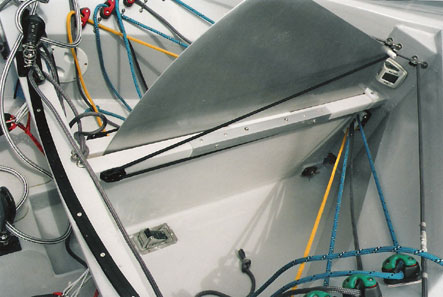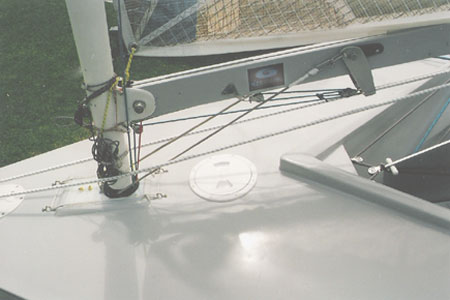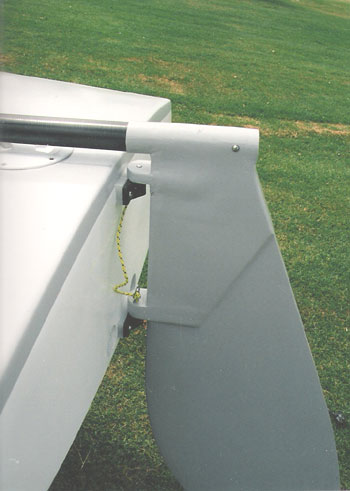Some Close Ups
Centrecase showing the plastic support inserts for the centreboard. Slots cut in the alloy support sections enable the inserts to be
adjusted, allowing the centreboard to be set up perfectly vertical and with no sideways slop.
Had to think long and hard if
this arrangement to control the centreboard in a vertical position broke rule D 3.2(c). Decided that a 200 x 20mm long flat edge was
not a rocking point and that, by their mere presence, prevents the centreboard from rocking anyway.
The alloy angle
sections also stiffen the centrecase capping which thus does not need bracing back to the cockpit sides.
Compass is
electronic and while "not yet" legal (as from November 08 they are legal for use in a Finn - yippee), I use one as it has a bigger
display, I cant see the numbers too well on the normal type (being an old fellow with poor eye sight). Its
doesn't give me any
other competitive advantage (and they cost no more than a comparable quality standard compass).

Unbelievable how the simple modification of placing the kicker idler pulley on the boom can make such a difference to the amount of extra
control one gains over the boom. Pop rivetted an extra hanger on the boom (at an angle), added a pulley, lengthened the kicker rope and
it was done.
With the extra set up control of a sliding centre board bolt comes the need to test to see which mast location,
leech tension, centreboard postion versus wind strength and wave pattern works best. Luckly Dan Slater has provided some starting
postions. Now need to go out and test.

Rudder was an old wooden Vanguard model. Trailing and bottom edges was routered off and replaced with fibreglass. Much sturdier and
workable set up compared with the wooden edges of the original.
Gudgeons are plastic and screwed into rebated slots. Carbon
fibred over to secure them in place. When using plastics in these situations there will not be a chemical bond between the surfaces.
To increase the mechanical bond, dimple the plastic like a golf ball and as the carbon fibre is vacuumed into place it will follow
the contours of the dimpled surface and present a very strong bond.
Carbon fibre tiller and sleeve keeps the weight down.
Total rudder weight 4.1kg.

Completed Finn was measured and ISAF certified (Finn number 3034). Final weight was spot on the 119 kg without correctors. Swing was a less then perfect result sitting a bit higher on the chart than I would have liked but within the bounds of reason.

